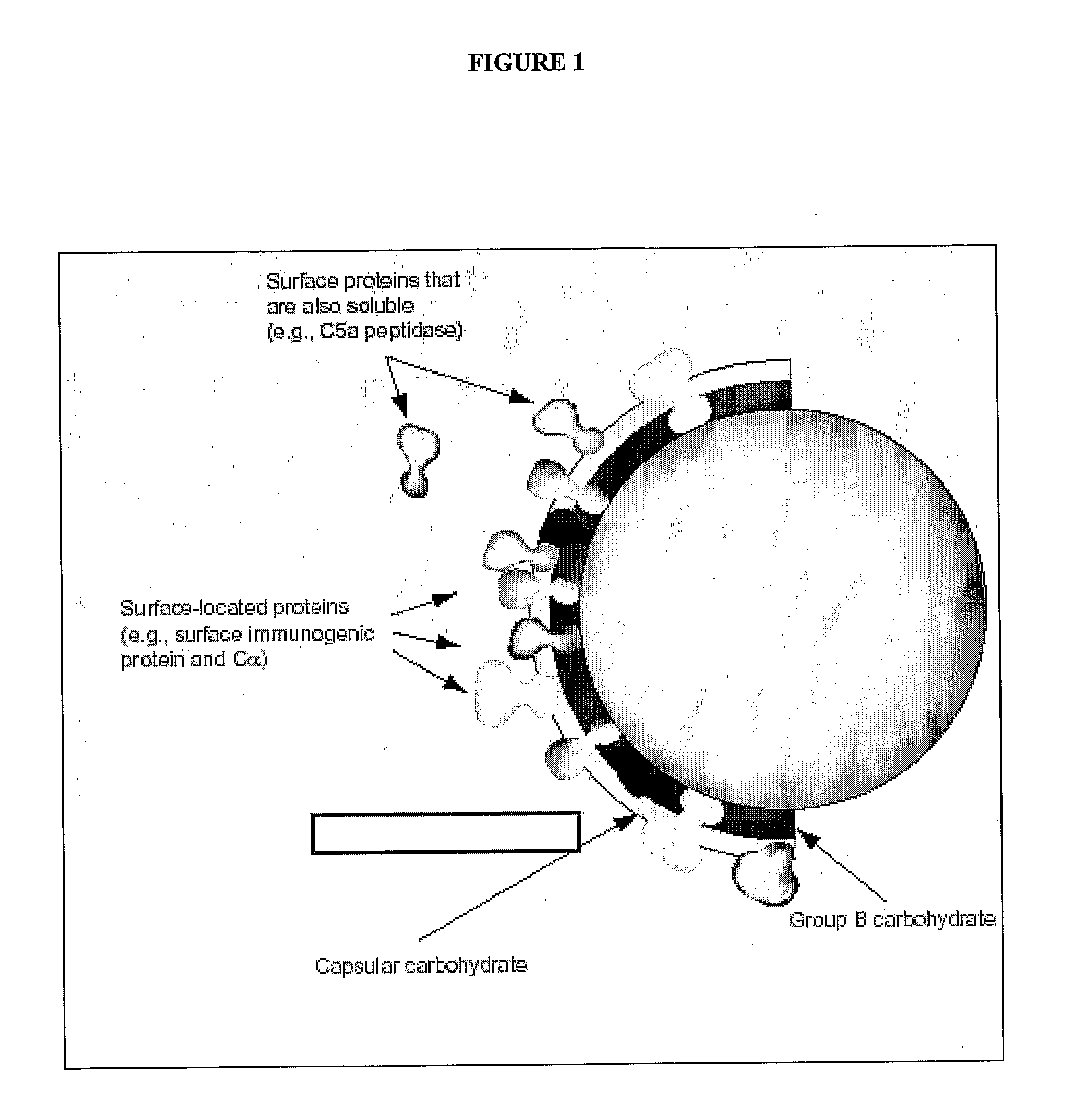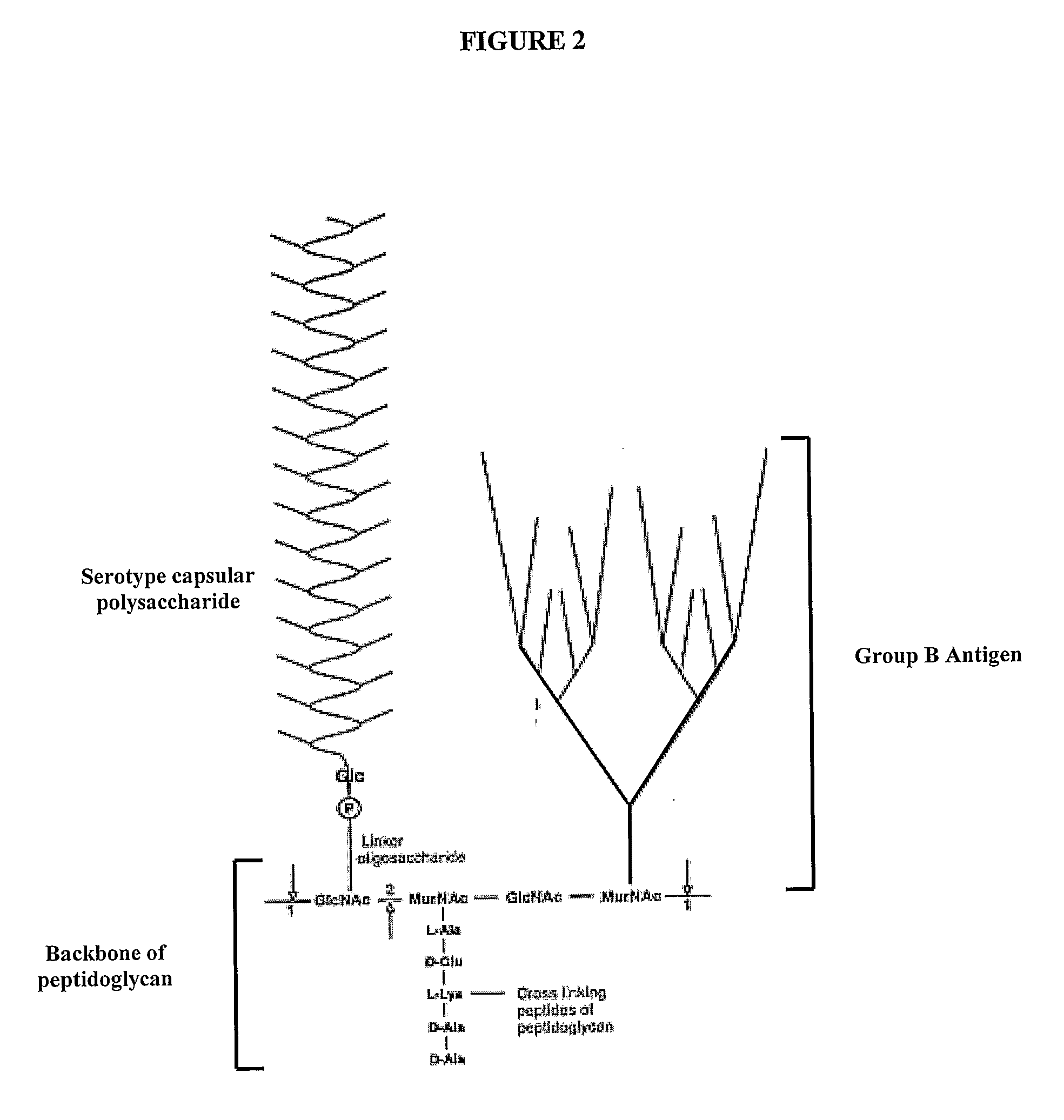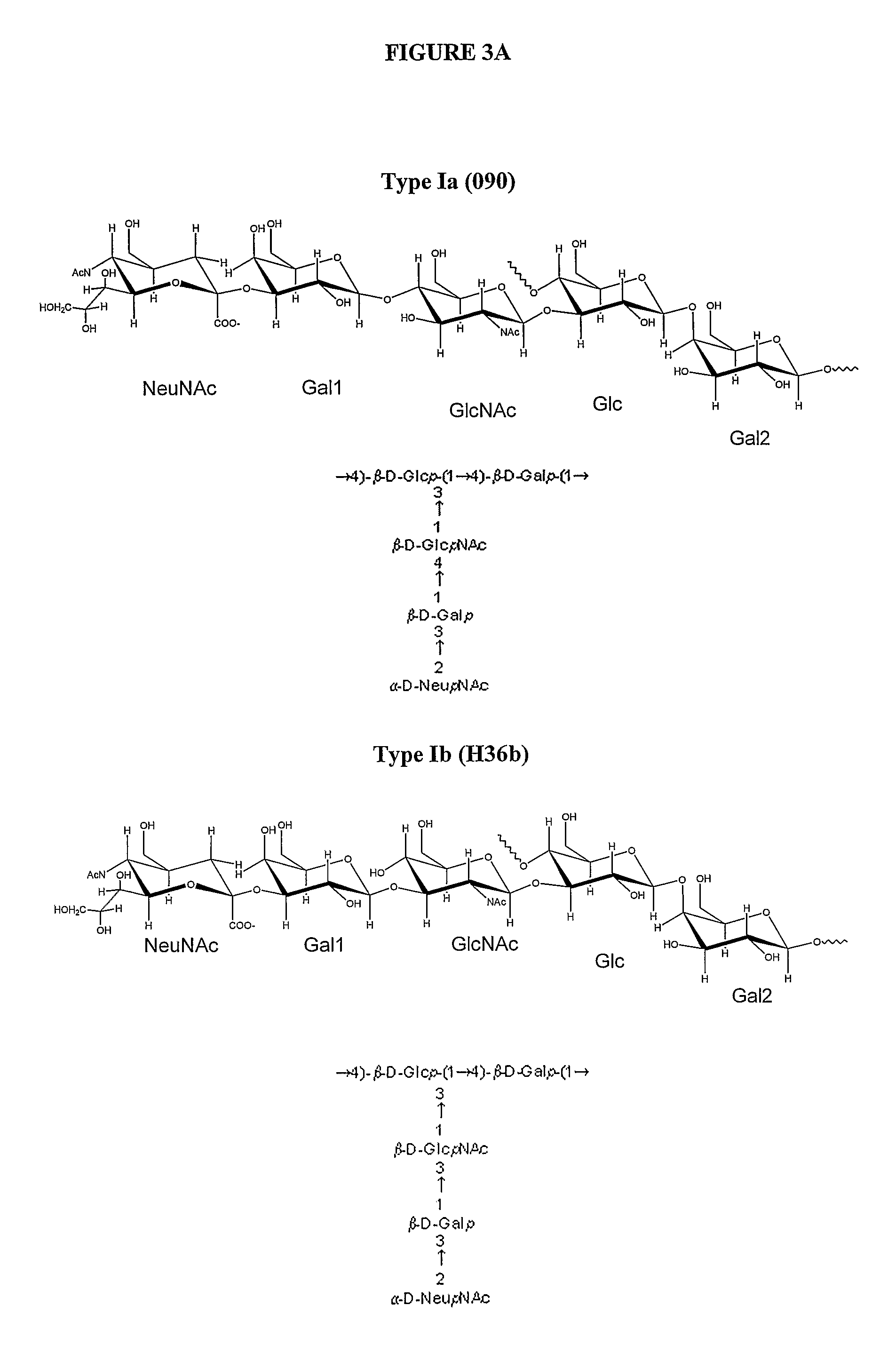Fermentation processes for cultivating streptococci and purification processes for obtaining cps therefrom
a technology of fermentation process and streptococci, which is applied in the field of bacteria cultures, can solve the problems of unpredictability of yield, change in other factors, and prone to strain stability problems in continuous culture, and achieves the effects of improving yield, reducing the number of strains, and improving the quality of cultur
- Summary
- Abstract
- Description
- Claims
- Application Information
AI Technical Summary
Problems solved by technology
Method used
Image
Examples
example 1
5 and 20 Liter Fermentation
[0296]A) Development of Inoculum Preparation Process
[0297]The study of the three GBS serotypes' growth was conducted in 5000 mL unbaffled shake flasks containing 1000 mL of the inoculum culture: 8 g / L dihydrate Na2HPO4 (Merck), 2 g / L monohydrate Na2HPO4 (Merck), 17 g / L autolysed yeast extract (Difco laboratories), 1 mg / L biotin (Merck) and 33 g / L monohydrate D-glucose (Merck). All compounds were dissolved in reverse osmosis water (ROW) and sterilized by filtration through a 0.22 μm pore size membrane filter (Nalgene) and then they were aseptically added to the 5000 mL Erlenmeyer flask sterilized in an autoclave at 122° C. for 30 minutes.
[0298]For each series of shake experiments, the medium (pH=7.3) was inoculated with different volumes of thawed culture (working seed were stored in 10% glycerol at −70° C.) and incubated at 35° C. with agitation at 200 rpm in a horizontal shaker cabinet (Innova 4330, eccentric 1 inch).
[0299]At various times during growth, ...
example 2
[0319]A) Strain and Cultivation Medium
[0320]Streptococcus agalactiae type III strain M781, originally isolated from a newborn with GBS meningitis, was provided by Carol J. Baker. Strain M781 cells were grown in a modified version of a chemically defined medium, initially developed for group A streptococci (Ref. 174). The composition of the chemically defined medium used in the batch culture study is listed in Table 1.
TABLE 1Chemically defined medium composition batch phaseFINALCHEMICALCONCENTRATIONCOMPOUNDS(mg · L−1)PRODUCERCarbon source in ROWD-Glucose. H2O20000MerckPhosphate solution in ROWK2HPO4300MerckKH2PO4440MerckNa2HPO4•2H2O3150MerckNaH2PO4•H2O2050MerckNaCl10MerckSulphate solution in ROW(NH4)2SO4600AshlandMgSO4•7H2O200MerckMnSO4•H2O10SigmaFeSO4•7H2O10SigmaSodium solution in ROWSodium citrate225SigmaSodium acetate6000Carlo ErbaVitamins solution in ROWBiotin0.01MerckNicotinamide2Carlo ErbaCa Panthotenate0.8MerckRiboflavin0.4FlukaThiamine hydrochloride0.4Merc...
example 3
Analytical Methods
[0334]A) Growth measurements
[0335]As soon as the samples were collected, the biomass content was monitored by reading the OD of the culture at a wavelength 590 nm (Novaspec II spectrophotometer—Pharmacia bioteck). Dilutions of the samples were realized in order to read a value of absorbance within the interval 0.10-0.50.
[0336]Cell concentration, defined as g / L of chemically defined medium was determined by placing an accurately measured volume of culture broth (30 mL) into a previously dried and weighed 50 mL polypropylene centrifuge tube. Cells were centrifuged at 27,217×g for 45 minutes at 4° C. in an Avanti-TM JA-20 XPI Beckman Coulter refrigerated centrifuge. The supernatant was decanted and the cell pellet was dried in an oven at 85° C. for 24 hours, and weighed. A relationship between the OD at 590 nm and gCDW / L (cell dry weight) biomass was established. An OD of 1 at 590 nm was equivalent to 0.44 gCDW / L biomass.
PUM
| Property | Measurement | Unit |
|---|---|---|
| Temperature | aaaaa | aaaaa |
| Temperature | aaaaa | aaaaa |
| Fraction | aaaaa | aaaaa |
Abstract
Description
Claims
Application Information
 Login to View More
Login to View More - R&D
- Intellectual Property
- Life Sciences
- Materials
- Tech Scout
- Unparalleled Data Quality
- Higher Quality Content
- 60% Fewer Hallucinations
Browse by: Latest US Patents, China's latest patents, Technical Efficacy Thesaurus, Application Domain, Technology Topic, Popular Technical Reports.
© 2025 PatSnap. All rights reserved.Legal|Privacy policy|Modern Slavery Act Transparency Statement|Sitemap|About US| Contact US: help@patsnap.com



